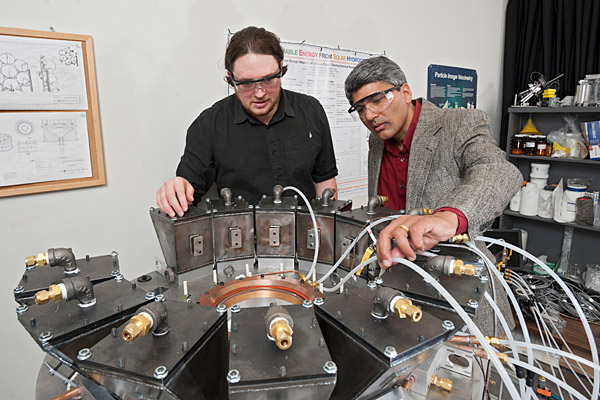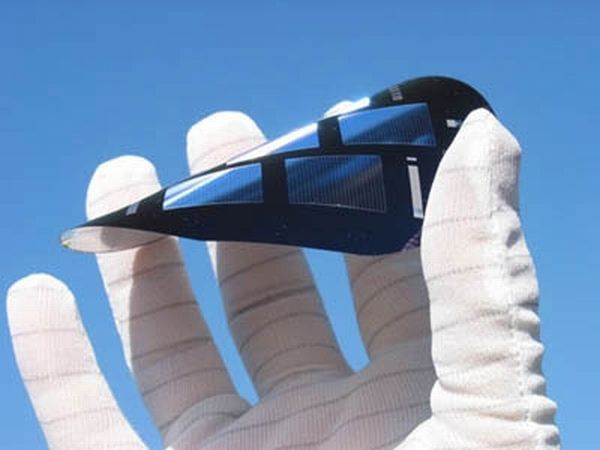Generating hydrogen from renewables is a question which has baffled scientists the world over. But, a doctoral student from the University of Delaware thinks that he may have found the answer. Traditionally, hydrogen is created from natural gas. The process facilitates the release of greenhouse gases as it is transformed into hydrogen. Erik Koepf, a doctoral student in mechanical engineering, along with his advisers Ajay Prasad, George W. Laird and Suresh Advani, have created a reactor that utilizes zinc oxide powder and highly concentrated sunlight to create solar hydrogen, a clean and sustainable fuel with no emissions.

The novel reactor which bears similarities of a large cylinder, contains ceramic materials and layers of advanced high temperature insulation. It measures about 2×3 feet and weighs 1,750 pounds. The reactor’s conical design uses gravity to supply zinc oxide powder to the system via 15 hoppers using specialized gears and a customized control assembly which Koepf developed at the University of Delaware. In order to keep the motor, aperture ring and the quartz window cool, cooling blocks have been installed.
Koepf and his colleagues have been testing the control systems for the reactor for many months now. In the coming days, they will be spending six weeks experimenting how effective their prototype really is at Zurich’s Federal Institute of Technology. During these tests, concentrated light, which will replicate the energy of 10,000 suns will be passed into the reactor resulting in soaring temperatures of over 3,000 degrees Fahrenheit. Once the reactor has reached the desired temperature, the hoppers will supply zinc oxide powder into the ceramic layer, which will cause a reaction to turn the powder into zinc vapor. The zinc will then be reacted with water to create solar hydrogen.
Another interesting feature about the reactor is that the zinc oxide byproduct, which is created during the reaction can be reused, thus, making the project self sustaining.
Via: UDEL




